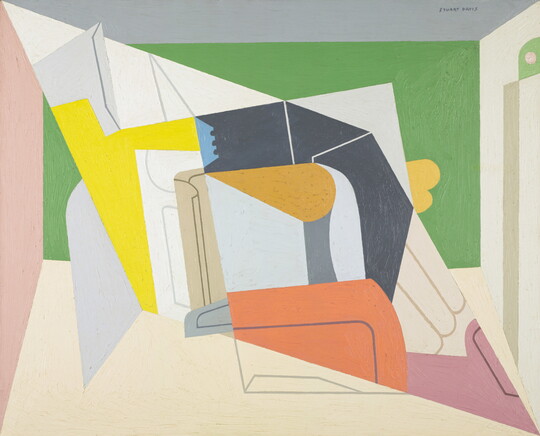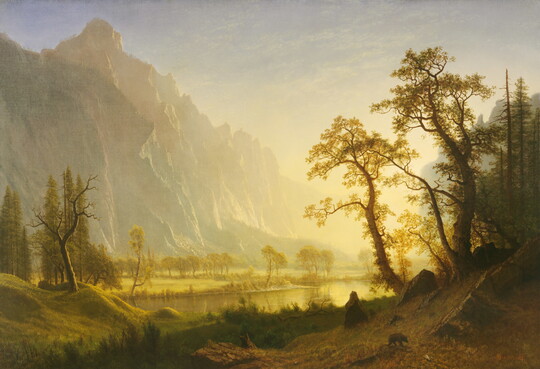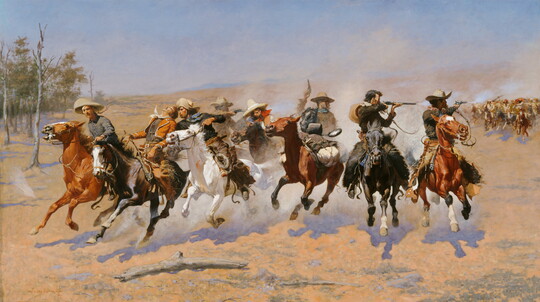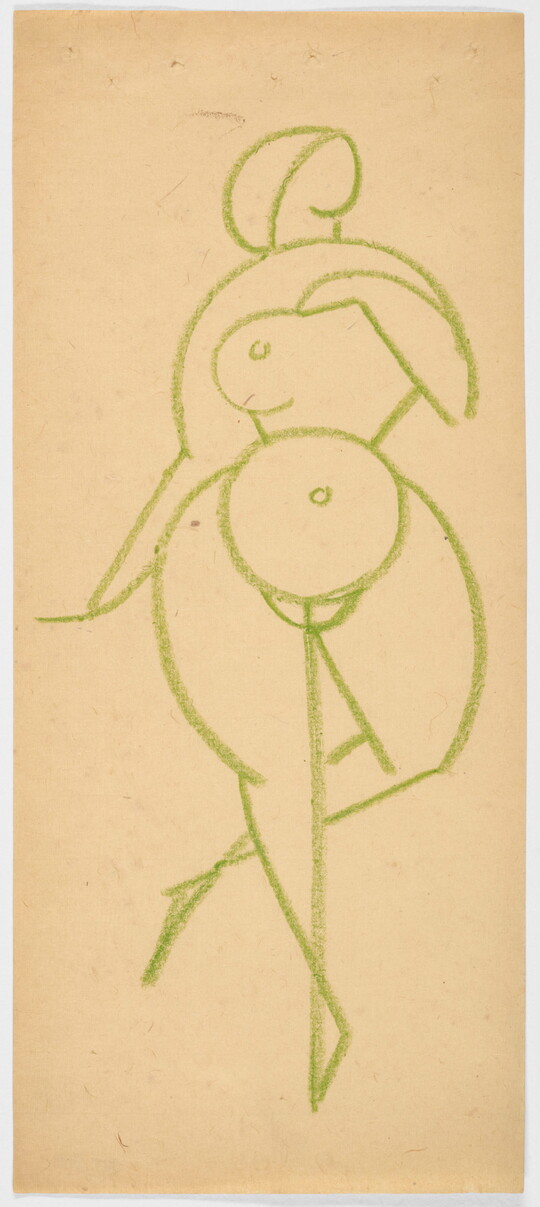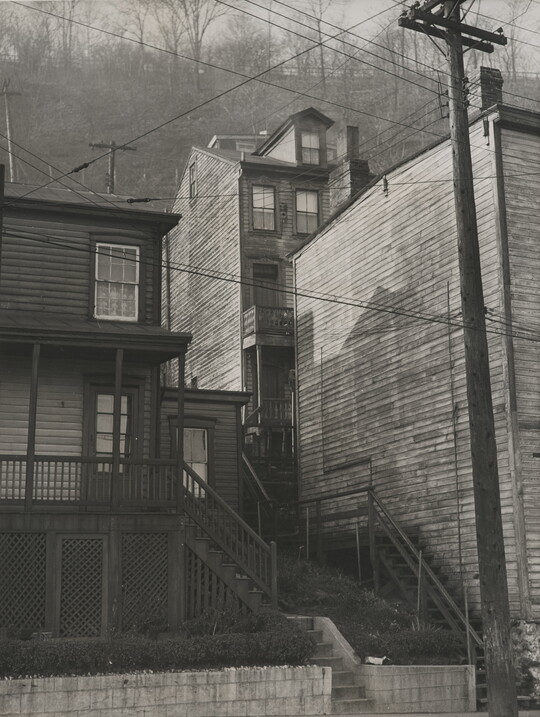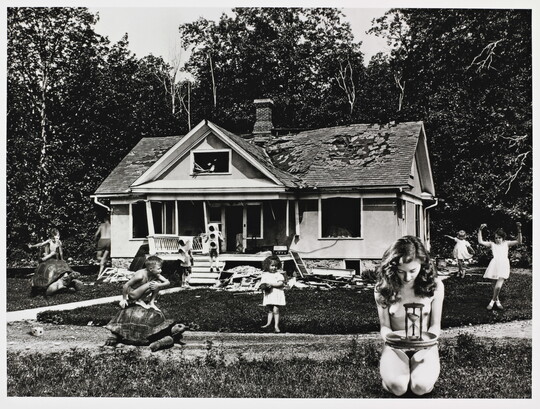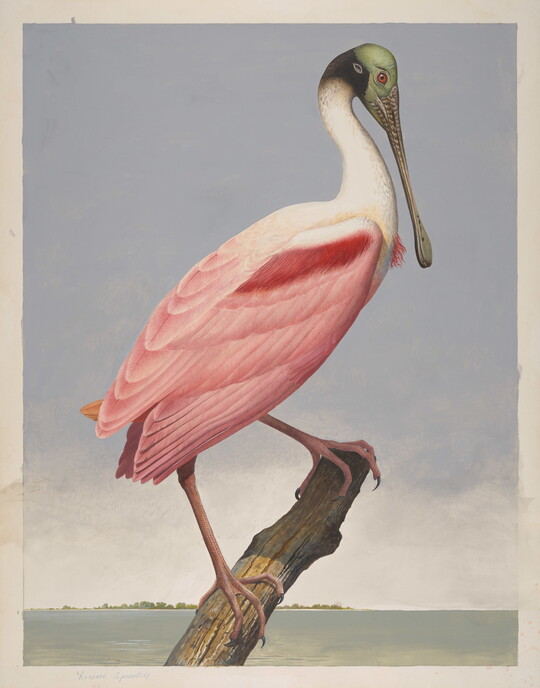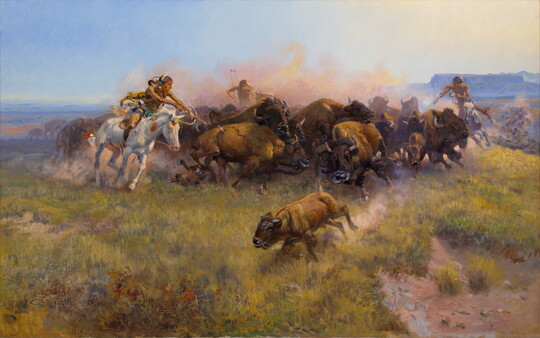

Artwork Image
Photo:
Controls
Parson Weems' Fable
Object Details
-
Date
1939
-
Object Type
Paintings
-
Medium
Oil on canvas
-
Dimensions
38 3/8 x 50 1/8 in.
-
Inscriptions
Recto:
signed and dated l.r.: GRANT WOOD \ 1939
Verso:
u.l. in ink on stretcher: "PARSON WEEMS' FABLE" \ GRANT WOOD 1939
u.r. in graphite on stretcher: OWNER MRS JOHN P. MARQUAND
label: Associate American Artists \ Inc. \ Title "Parson Weems Fables" \ Artist Grant Wood \ Medium \ Ledger No. \ Rack No. Bin No. \ 711 FIFTH AVENUE. NEW YORK
label:WHITNEY MUSEUM OF AMERICAN ART \ 10 Wesr 8th Street, New York City \ Receiving Room 15 1/2 Mac Dougal Alley \ 1940 ANNUAL EXHIBITION OF PAINTINGS \ SCULPTURE, WATERCOLOR, DRAWINGS AND PRINTS \ JANUARY 10 - FEBRUARY 18, 1940 \ ARTISTS Grant Wood \ ADDRESS 1142 Court Street Iowa City Ia \ TITLE "Parson Weems' Fable" \ PRICE \ INSURANCE VALUATION \ RETURN ADDRESS c/o Assoc Amer Artists \ 711 Fifth Avenue
Frame, Recto:
l.c. on frame in oil: PARSON WEEMS' FABLE
Frame, Verso:
in graphite: PARSOn WeeMS
-
Credit Line
Amon Carter Museum of American Art, Fort Worth, Texas
-
Accession Number
1970.43
-
Copyright
Public domain
Object Description
In this painting, the historian Mason Locke Weems, commonly known by his clerical title, Parson Weems, pulls back a curtain to reveal a brightly lit scene. Looking toward the viewer, he points at 6-year-old George Washington. Bearing an adult head and holding an axe, George gazes blankly up at his father, Augustine, who questions his son while holding a partially cut cherry tree. All of this takes place in front of a 20th-century brick building, which Wood modeled after his own home in Iowa.
The unique scene illustrates the fable of Washington and the cherry tree, which Weems invented in 1806 for the first president’s biography. Wood playfully suggests the artifice of the tale here, presenting the story in the manner of a costumed stage play rather than a real event. Amid the action, two Black figures pick cherries in the background, a reference to Washington’s slaveholding past and a poignant reminder of what often gets left out in historical mythmaking.
—Text taken from the Carter Handbook (2023)
-
George and MarthaJanuary 28–June 1, 2015
This exhibition explores presidential representation, delving into the enduring image of George and Martha Washington and the artistic decisions that America’s first great generation of artists made in order to remember these national icons.
-
From Remington to O’Keeffe: The Carter’s Greatest HitsOctober 6, 2018–March 22, 2019
During the renovation, this exhibition features highlights from the permanent collection, including paintings, photographs, and sculptures, by some of America’s most renowned artists.
Additional details
Location: On view
See more by Grant Wood
Tags
-
Grant Wood was interested in American folklore, as evidenced in, Parson Weems’ Fable, which shows a young George Washington cutting down a cherry tree.
In the right foreground of the canvas, a white-haired man wears an olive-green, double-breasted jacket and looks out at the viewer. He pulls back a dark red curtain lined with dark red pom-poms. This man uses his right hand to hold the curtain behind his back, while his left hand points to an outdoor scene behind the curtain. In this scene, a child’s body with the adult head of George Washington stands up straight, holding an axe in one hand while the other points to the axe. The young Washington looks up at his father, who stands to the left and is wearing a black tricorn hat, a black bow low in his white hair, a long red coat, and cream-colored pants. One of his hands is extended palm up toward the young Washington, implying he wants the axe, and his other hand holds onto a bent cherry tree. The top of the tree is circular with lots of little, red cherries on it, and the bottom of the tree trunk shows split bark where Washington tried to chop it down.
In the background, partially covered by the curtain on the right, is a brick home with five exposed windows; all of the windows are closed up with blue plantation shutters. Off in the distance to the left are a Black man and woman picking cherries from another tree. There is a tree grove in the far background.
-
Why might fables or popular stories appeal to an artist as inspiration for an artwork?
What strategies might an artist use to convey a narrative?
How have fables and folktales helped shape people's understanding of history and national identity?
How can an artwork influence or alter our understanding of a fable or folktale?
-
Grades 4–8
Activity 1
We know that in this work of art, Grant Wood is representing the moral of honesty through Parson Weems’ American fable of George Washington and the Cherry Tree. Students should consider other morals that we try to uphold as Americans. This could be loyalty, bravery, patience, knowledge, support, independence, acceptance, or something else. Students will draw curtains to create a stage for their artwork, just as Grant Wood painted. Then, they will sketch a representation of the moral that is most important to them.Activity 2
Students will explore narrative from the role of narrator—the one pulling back the curtains to reveal a story about an individual. Students should consider:- Who will be the star on their stage?
- Whose story should be told and known by the public?
- What lesson, idea, or skill has this person taught?
- What action will be taking place on the stage?
- What will be in the background?
Students can sketch a pair of curtains. In between the curtains they can write the following headings: “Who,” “Action,” and “Background.” They should be sure to leave space in between the headings. For “Who,” write down who is the central figure of your story and explain why you selected this individual. For “Action” write down two to three sentences describing what action will take place on your stage. For “Background” give a detailed description of what will be in the background.
All Levels
Students will use a stencil to make an outline of a star. Next they will consider “simple, everyday things” to include in a patriotic artwork. Using blue and red markers, students will list those things inside and/or outside of the star.
Share Educator Resources
Amon Carter Disclaimer
This information is published from the Carter's collection database. Updates and additions based on research and imaging activities are ongoing. The images, titles, and inscriptions are products of their time and are presented here as documentation, not as a reflection of the Carter’s values. If you have corrections or additional information about this object please email us to help us improve our records.
Every effort has been made to accurately determine the rights status of works and their images. Please email us if you have further information on the rights status of a work contrary or in addition to the information in our records.
Related Works
-
Egg Beater No. 2, 1928
Stuart Davis
Oil on canvas
1996.9
-
Sunrise, Yosemite Valley, ca. 1870
Albert Bierstadt
Oil on canvas
1966.1
-
A Dash for the Timber, 1889
Frederic Remington
Oil on canvas
1961.381
-
Untitled, 1970
Luchita Hurtado
Lithograph
1970.86
-
Green Nude, ca. 1920
Gaston Lachaise
Crayon on paper
2018.4
-
Untitled (Pittsburgh Housing), 1930s
Manuel de Aumente
Gelatin silver print
P2009.11
-
The Time Game, 2011
Jane Hammond
Gelatin silver print
P2011.29
-
Roseate Spoonbill, ca. 1980-85
Scott Gentling, Stuart Gentling
Graphite, opaque and transparent watercolor on paper
2018.26
-
The Buffalo Hunt [No. 39], 1919
Charles M. Russell
Oil on canvas
1961.146







